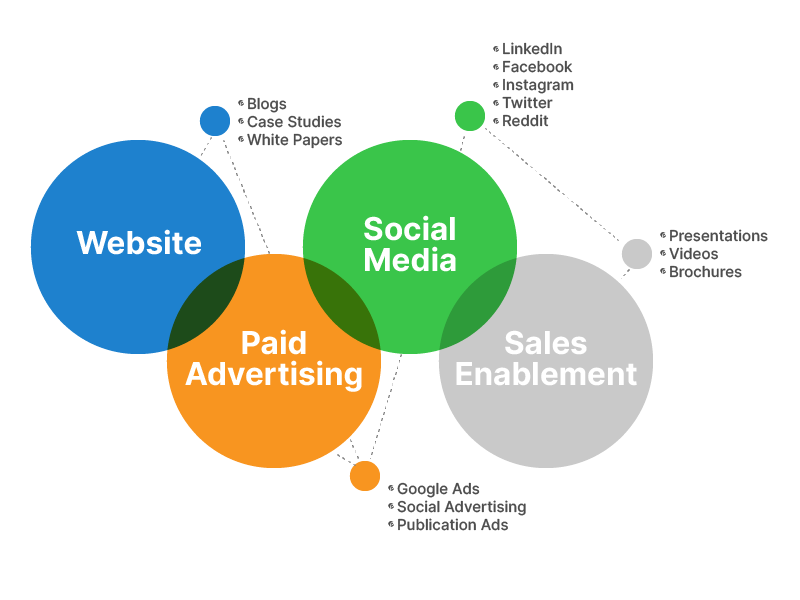Having a strong marketing strategy is an instrumental tool to get your company from where you are now – to where you want to be. While creating a marketing strategy can often be a daunting task, it doesn’t have to be. For every client that we work with each strategy can be vastly different but there are 6 key elements that we use to uncover the best path forward for each of them.
- Discover goals, challenges, and budget
- Understand target audience
- Define value proposition
- Determine marketing channels and tactics
- Set goals and metrics
- Review and optimize strategy
Let’s take a moment to unpack these elements one at a time. They may seem simple enough, but if you miss the mark on these it could impact your results.
1. Discovery/Onboarding
One of the most important steps in creating a marketing strategy is taking a step back and looking at the company’s goals, challenges, and budget. Understanding these key factors will determine the overall direction, set priorities, and influence how the budget is allocated between each marketing channel.
2. Understand the Audience
To understand your target audience, start by identifying the demographics of your target audience, such as their age, gender, location, and job title. Secondly, conducting market research will help to gather more detailed information about your target audiences such as needs, preferences, and behaviors. You can then tailor your marketing strategy to best resonate with them. For example, using a specific tone for a campaign, emphasizing a valued attribute, or using a specific social media platform that your target audience uses most.
3. Define Value Proposition
Defining a unique value proposition will make your brand stand out from the competition. This will explain how your product or service meets the needs and desires of the customer, and why a prospect should choose you. This is important for your brand as a company and will be promoted throughout your marketing campaigns.
4. Determine Channels and Tactics
Research the different marketing channels and tactics available to you and determine which ones align with your target audience, goals, and budget. Some channels to consider include website, social media, paid advertising, and sales enablement.

5. Set Goals
Set clear goals based on your individual needs such as brand awareness, lead generation, or thought leadership. Once you have established these goals you need to set KPIs (key performance indicators) to be able to measure success through your website, social media, email, and prospect/customer feedback survey analytics.
6. Review
A marketing strategy is like a good game plan. It will start you in the right direction and give you a framework from which to succeed. However, as you begin to execute your game plan, some tactics will exceed projections and some will underperform. Monitoring your performance and adjusting accordingly will help you maximize your marketing ROI.
Customization Is Key
Even though we’re giving you a simple step-by-step process for creating a B2B marketing strategy, no two strategies are the same. Our marketing strategists develop plans for their clients who might be in the same industry, similar in size, or broad service offering but their plans are always very different based on their individual needs. Every company has their own story to tell and goals to achieve and their paths will never be exactly the same. We utilize our industrial knowledge and marketing backgrounds while addressing your challenges to create impactful marketing that resonates with your target audience and gets results. Talk to one of our Marketing Strategists to get started on your company’s marketing plan.
